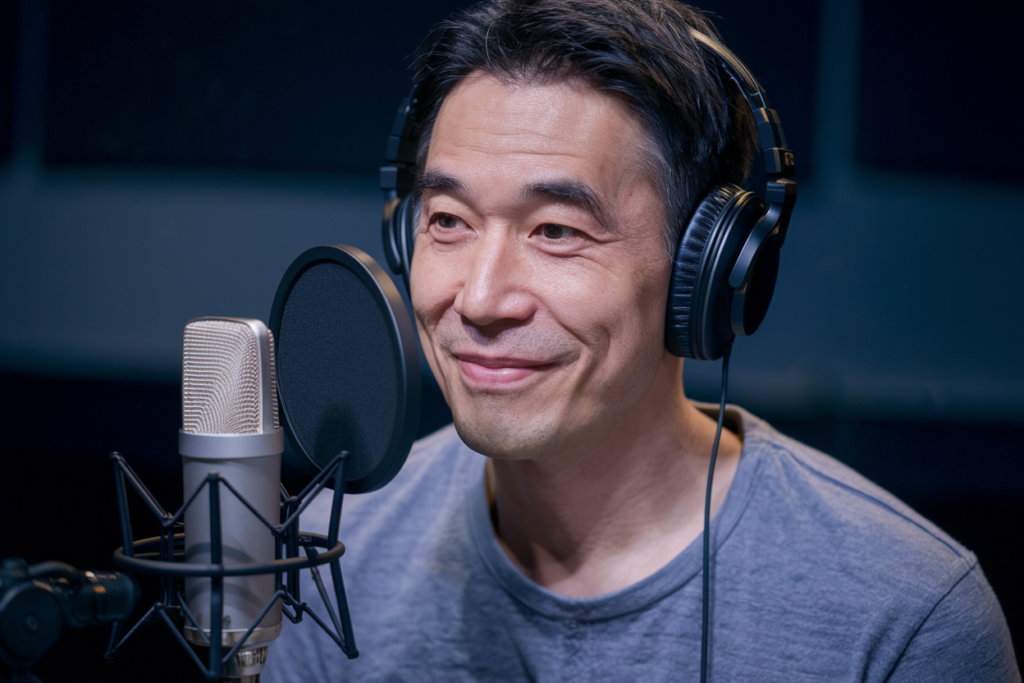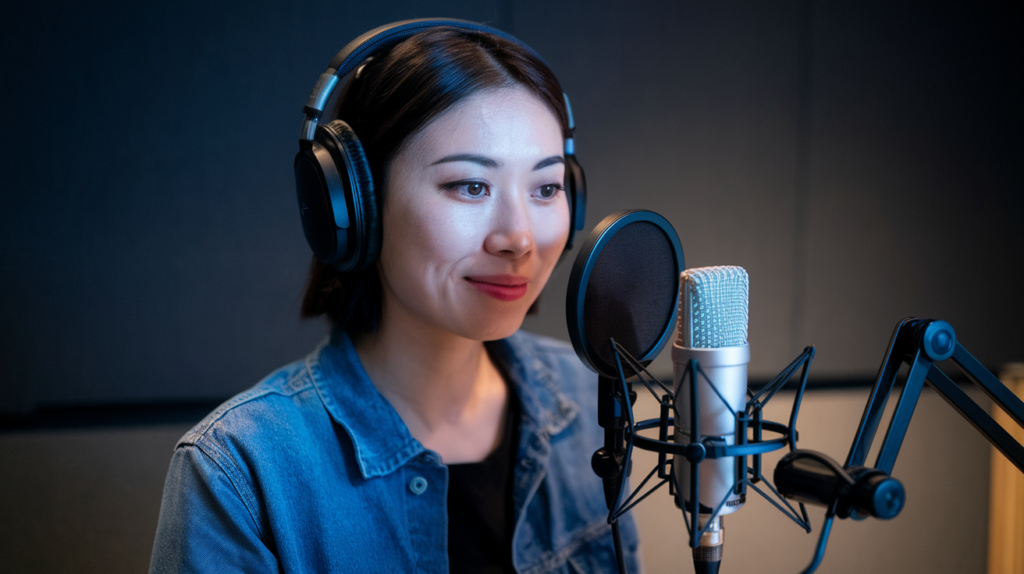Key Takeaways
- Mastering Dialects Enhances Authenticity: Understanding Japan’s regional dialects is essential for delivering genuine voiceover performances that resonate with local audiences.
- Cultural Nuances Matter: Grasping the cultural significance and emotional undertones of each dialect enriches your portrayal, fostering deeper connections with listeners.
- Versatility is Key: Being able to switch between different Japanese dialects expands your appeal and increases opportunities in a competitive market.
- Invest in Research and Practice: Engaging with native speakers and utilizing phonetic guides will strengthen your pronunciation, intonation, and overall performance skills.
- Embrace Challenges for Growth: Navigating the complexities of dialects leads to personal growth as a voice artist, making you a valuable asset for diverse projects requiring localized expertise.
Ever wondered how voiceover artists master the nuances of Japanese dialects? With Japan’s rich tapestry of regional accents, diving into this world can feel daunting. But don’t worry—understanding these dialects is key to delivering authentic performances that resonate with audiences.
Overview of Voiceover Work With Japanese Dialects
Voiceover work in Japan involves unique challenges, especially when it comes to mastering various dialects. Japan’s linguistic landscape boasts numerous regional accents, each with distinct characteristics. Understanding these differences enhances the authenticity of your performance as a voice artist.
Japanese dialects can change not just pronunciation but also vocabulary and intonation. For instance, the Kansai dialect differs significantly from Tokyo’s standard Japanese, offering a more playful tone that resonates well with local audiences. If you’re aiming to connect on a deeper level, immersing yourself in these nuances is essential.
Moreover, clients increasingly seek voice talent who can deliver localized performances. They recognize that an authentic-sounding voice over resonates better with listeners and brings characters or narratives to life. This demand creates opportunities for skilled voice actors who understand the cultural context behind each dialect.
To succeed as a voice over artist in this realm, you must invest time in research and practice. Engaging with native speakers provides insights into everyday speech patterns and cultural references tied to specific regions. As you refine your skills, remember that versatility sets you apart—being able to switch between different dialects expands your appeal to potential clients.
Mastering Japanese dialects is crucial for anyone pursuing a career as a voice actor in this vibrant market. Embrace the journey of learning these variations; your efforts will pay off by enhancing your portfolio and attracting diverse projects.
Importance of Dialect in Voiceover
Dialect plays a crucial role in voiceover work, particularly when it comes to delivering authentic performances. Understanding regional accents enhances connection with audiences, making characters more relatable and stories more engaging.
Cultural Significance
Cultural nuances embedded in dialects shape communication. For voice artists, grasping these subtleties ensures that they honor the traditions and emotions tied to specific regions. A voice actor who can navigate these cultural elements demonstrates respect for the audience’s background, fostering a deeper bond. By using culturally relevant expressions and tones, you create an immersive experience that resonates on multiple levels.
Regional Variations
Japan’s linguistic landscape features numerous regional variations. Each dialect brings its own flavor: from the playful Kansai tone to the more reserved standard Tokyo Japanese. These differences aren’t just about pronunciation; they encompass unique vocabulary and intonation patterns as well. When you master these variations as a voice over talent, you expand your versatility and appeal in this competitive field. Clients increasingly seek voice actors who can adapt seamlessly between dialects, enhancing their projects’ authenticity and relatability.
Emphasizing dialect mastery not only strengthens your skill set but also positions you as a valuable asset for diverse projects requiring localized expertise.
Techniques for Mastering Japanese Dialects
Mastering Japanese dialects requires focused techniques that enhance your voiceover skills. Understanding the nuances of each dialect can set you apart as a voice talent, allowing you to deliver authentic performances.
Phonetics and Pronunciation
Phonetics play a crucial role in capturing the essence of various Japanese dialects. You’ll encounter distinct sounds that differ from standard Japanese. For instance, in the Kansai dialect, vowel elongation is more pronounced, while certain consonants may soften or shift entirely compared to Tokyo’s accent. Practicing these unique phonetic elements strengthens your ability to mimic regional speech patterns accurately.
To refine your pronunciation:
- Listen Actively: Immerse yourself in native speakers through media like anime or dramas.
- Record Yourself: Use playback to identify areas needing improvement.
- Use Phonetic Guides: Study resources that break down sounds using IPA (International Phonetic Alphabet).
Practicing Intonation and Rhythm
Intonation and rhythm significantly influence how your performance resonates with listeners. Each dialect has its own melodic patterns that convey emotions and intentions effectively. For example, the intonation in Hokkaido may rise more at the end of sentences than in other regions.
To master intonation:
- Mimic Native Speakers: Shadow dialogues from films or radio programs.
- Experiment with Pacing: Adjust speed according to the emotion conveyed—quicker for excitement, slower for seriousness.
- Engage with Locals: Conversations with native speakers can provide real-time feedback on your delivery style.
By focusing on phonetics and practicing intonation, you’ll elevate your expertise as a voice artist capable of tackling diverse projects that require authentic regional representation.
Challenges in Voiceover Work With Japanese Dialects
Voiceover work with Japanese dialects presents unique challenges that require attention and understanding. Mastering these intricacies ensures voice artists deliver authentic performances that resonate with specific audiences.
Finding Native Speakers
Finding native speakers is crucial for honing your skills in various dialects. Engaging with locals allows you to absorb natural speech patterns, intonations, and expressions. Collaborating with native speakers can also provide valuable feedback on your performance. Consider joining language exchange groups or online forums where you can practice and refine your accent while building connections within the community.
Understanding Nuances and Context
Understanding nuances and context significantly enhances the effectiveness of your voiceover work. Each dialect carries distinct cultural references, humor, and emotional undertones that influence how characters are perceived by audiences. For example, a playful Kansai accent might convey warmth, while standard Tokyo Japanese may project formality. Diving into regional histories and social behaviors enriches your portrayal, making it relatable for listeners. Embrace research as a vital tool; it not only deepens your knowledge but also connects you more authentically to the characters you represent.
Navigating these challenges enriches your abilities as a voice artist and positions you favorably in an industry increasingly focused on localized content. By prioritizing connections with native speakers and grasping cultural nuances, you’ll elevate your voiceover talent to meet diverse project demands effectively.
Conclusion
Mastering Japanese dialects isn’t just about pronunciation; it’s a gateway to authentic storytelling. By understanding the nuances of each regional accent, you can create deeper connections with your audience. Your ability to embody diverse characters will set you apart in a competitive market where localization is key.
Investing time in research and practice pays off. Engage with native speakers and immerse yourself in the culture to enrich your performances. As demand for localized voiceover work grows, becoming proficient in these dialects will not only enhance your skill set but also position you as a sought-after talent. Embrace this journey, and you’ll discover new dimensions to your voiceover artistry that resonate with listeners on a profound level.
Frequently Asked Questions
What are Japanese dialects, and why are they important for voiceover artists?
Japanese dialects, or “hōgen,” reflect regional variations in pronunciation, vocabulary, and intonation. For voiceover artists, mastering these dialects is crucial to deliver authentic performances that resonate with local audiences and deepen character relatability.
How does the Kansai dialect differ from standard Japanese?
The Kansai dialect features a playful tone and unique expressions compared to Tokyo’s standard Japanese. This distinctiveness allows voice actors to connect more effectively with audiences familiar with this regional style.
Why is understanding cultural nuances essential in voiceover work?
Cultural nuances enrich portrayals by adding depth and authenticity. Each dialect carries specific references and emotional undertones that impact how characters are perceived, making it vital for artists to grasp these elements.
What techniques can help master Japanese dialects?
Voice actors can enhance their skills by actively listening to native speakers, recording their practice sessions for feedback, using phonetic guides, and engaging in conversations with locals. These methods aid in refining pronunciation and intonation.
How can voice artists find native speakers for practice?
Artists can seek out language exchange groups online or participate in local community events where they can interact with native speakers. Engaging consistently helps absorb natural speech patterns while receiving constructive feedback.
What role does research play in mastering a Japanese dialect?
Researching regional histories and social behaviors provides context that informs a voice artist’s delivery style. Understanding the cultural background of a dialect enhances performance quality by honoring its traditions and emotional significance.
Is there a growing demand for localized performances in voiceover work?
Yes, there is an increasing demand for localized performances as clients prioritize authenticity. Voice talent who can accurately depict regional accents are highly sought after to ensure narratives resonate deeply with target audiences.







